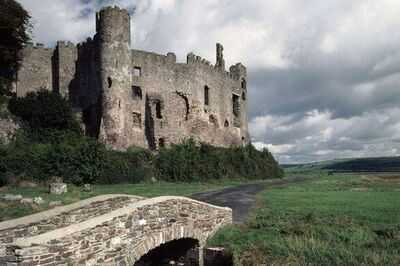
A team of archaeologists has made a groundbreaking discovery at the base of a medieval castle in a Welsh village, unearthing a unique quay believed to be the first of its kind.
Situated at Island House in Laugharne, Carmarthenshire, a 16th-century Grade-II listed building, the quay would have served as a bustling hub for ships and boats to moor and transfer goods or passengers just beyond the old town fortifications.
This find could dramatically alter the historical narrative of Laugharne Castle and its environs, with dendrochronology and radiocarbon dating pinpointing the timber from the Island House restoration to the year 1437 AD.
READ MORE: Pension rule shows how much money you're missing for happy retirement
READ MORE: Today's horoscope for July 26 as Gemini embarks on new beginnings
Island House Restoration Ltd embarked on this ambitious project at the start of 2020, vowing to return the edifice to its former glory before transforming it into a hotel, bar, and restaurant.
The property is located a mere stone's throw from the castle, adjacent to the River Taf. In 2020, during earlier excavations, signs of an ancient watercourse were found, believed to have been a refuse channel used by both Laugharne Castle and the neighbouring township since the 12th century, reports the Express.

"We knew that Island House had an interesting history, but the discovery of a quay was unexpected," said Ken Murphy, who is overseeing the excavation for Heneb, the Trust for Welsh Archaeology.
"Medieval quays have already been excavated in large UK ports, such as London and Bristol. To find one in Laugharne was quite a surprise.
"It makes us re-evaluate the importance of Laugharne within the trading network of the British Isles in the Middle Ages. It also emphasises the importance of sea trade in the past."
The tidal inlet has long since filled with silt and now forms part of an ordinary car park in the town. Maritime traffic is believed to have abandoned attempts to navigate the waterway during the 17th century.
Additional stone structures emerged during the excavation, including a substantial, prestigious hall house complete with an impressive fireplace, most likely owned by a prosperous trader.

Stephen Kirkwood, director of Island House Restoration, which funded the excavation, remarked: "We are trying to find out as much as possible about the history of Island House.
"The archaeological discoveries are very exciting. They will complement historical research and other investigations we have commissioned.
"We have always been fascinated by Island House and took the opportunity to buy it over five years ago with the aim of making it into a small hotel. It was in very poor condition when we bought it and was in danger of falling down.
"It is now safe, and the building work is progressing well. One of the things we are thinking about is how we can preserve and display the important archaeological discoveries for the enjoyment of future visitors."
Excavation efforts will continue at the location, with multiple public viewing days scheduled for visitors to examine the ancient finds.
Dr Carol Bell, Chair of Heneb, said: "What Ken and the Heneb team have discovered at this site is remarkable. It is easy to picture how busy this medieval quay would have been, with small boats coming and going to the quayside.
"Furthermore, it underlines the importance of Laugharne as a port during this period. The discoveries add significantly not only to our understanding of Medieval Wales but also about Laugharne's place in extensive trading networks to other parts of Britain and beyond."